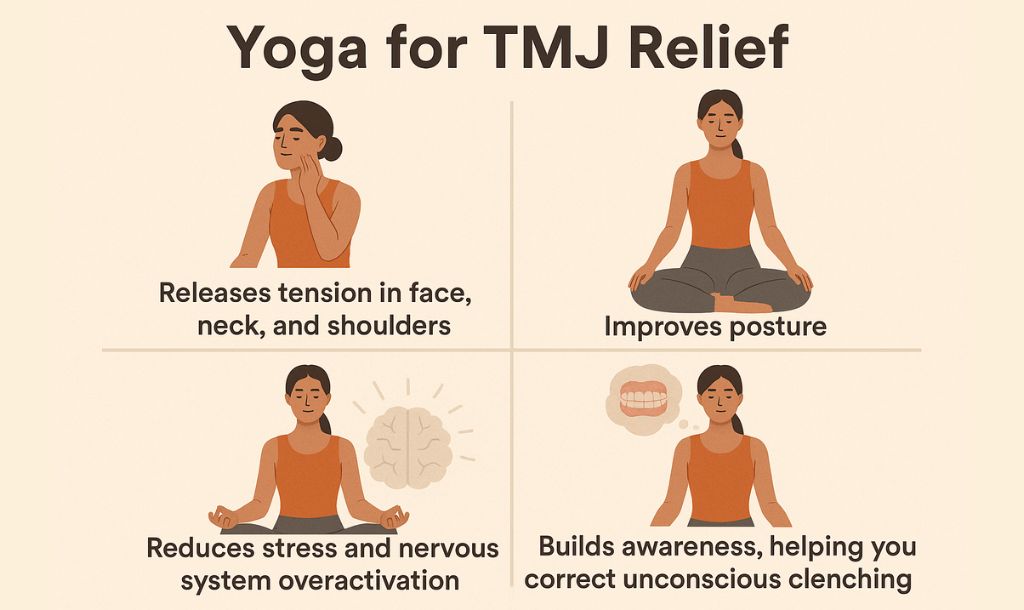What is Padmasana (Lotus Pose)?
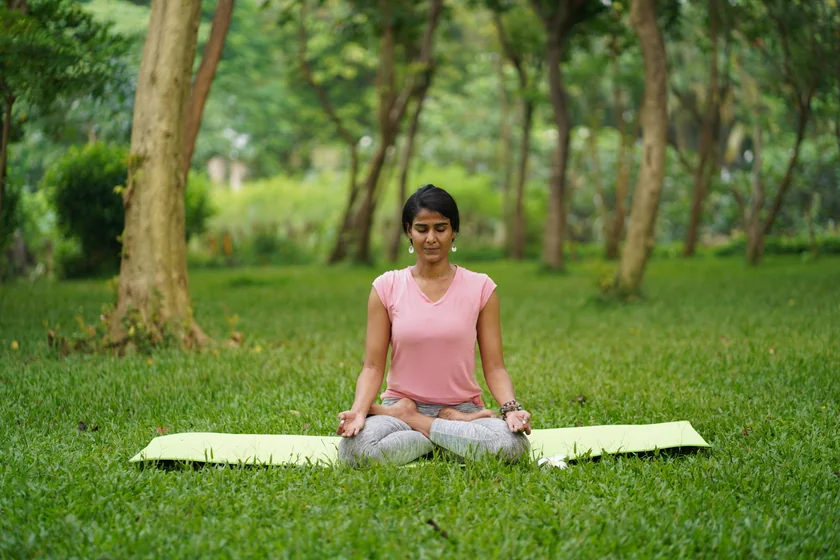
Padmasana, or the Lotus Pose, is a seated yoga posture used for meditation and physical well-being. It involves sitting cross-legged with the feet placed on opposite knees. Sitting upright with a straight spine improves posture, increases flexibility in the hips and knees, and promotes stability. This pose also encourages deep breathing, which calms the mind and enhances focus.
In Tibetan, Chinese, and Buddhist traditions, it is known as Vajra Pose and symbolizes spiritual growth and inner peace.
Overview & Etymology
Padmasana is a Sanskrit word combining Padma (lotus) and Asana (pose). The lotus symbolizes purity, rebirth, spirituality, and progress toward enlightenment. In mythology, the lotus holds deep significance—it grows in a murky pond but blooms with remarkable beauty. Thus, in yoga, the Lotus Pose is considered a pathway to spiritual awakening and blossoming.
In Hindu, Jain, Tantra, and Buddhist traditions, Padmasana has been used for meditation since ancient times, even before Hatha Yoga was formally developed. The Hatha Yoga Pradipika (15th century) describes Lotus Pose as the “destroyer of all diseases”—a practice that removes ailments, balances the body's metabolic functions, and enhances mental clarity.
The Bhagavad Gita encourages people to be like the lotus—performing their duties selflessly, without attachment to results. Just as a lotus leaf remains untouched by muddy water, a person who acts without seeking rewards remains free from sin.
At a Glance
Sanskrit Name: पद्मासन
Pronunciation: Pa-dah-maa-sun-aa
Pose Type: Seated
Also known as: Lotus Pose or Cross-Legged Sitting
Strengthens: Spine, Neck, and Mind
Stretches: Knees and Ankles
How to Do Padmasana: Step-by-Step Guide
Part 1. Preparing for Padmasana
Sitting in Padmasana (Lotus Pose) requires flexibility in the hips, knees, and ankles. If these areas feel tight or stiff, it’s essential to prepare with stretches and preparatory poses to open them. Some preparatory poses include:
1. Sukhasana (Easy Pose)
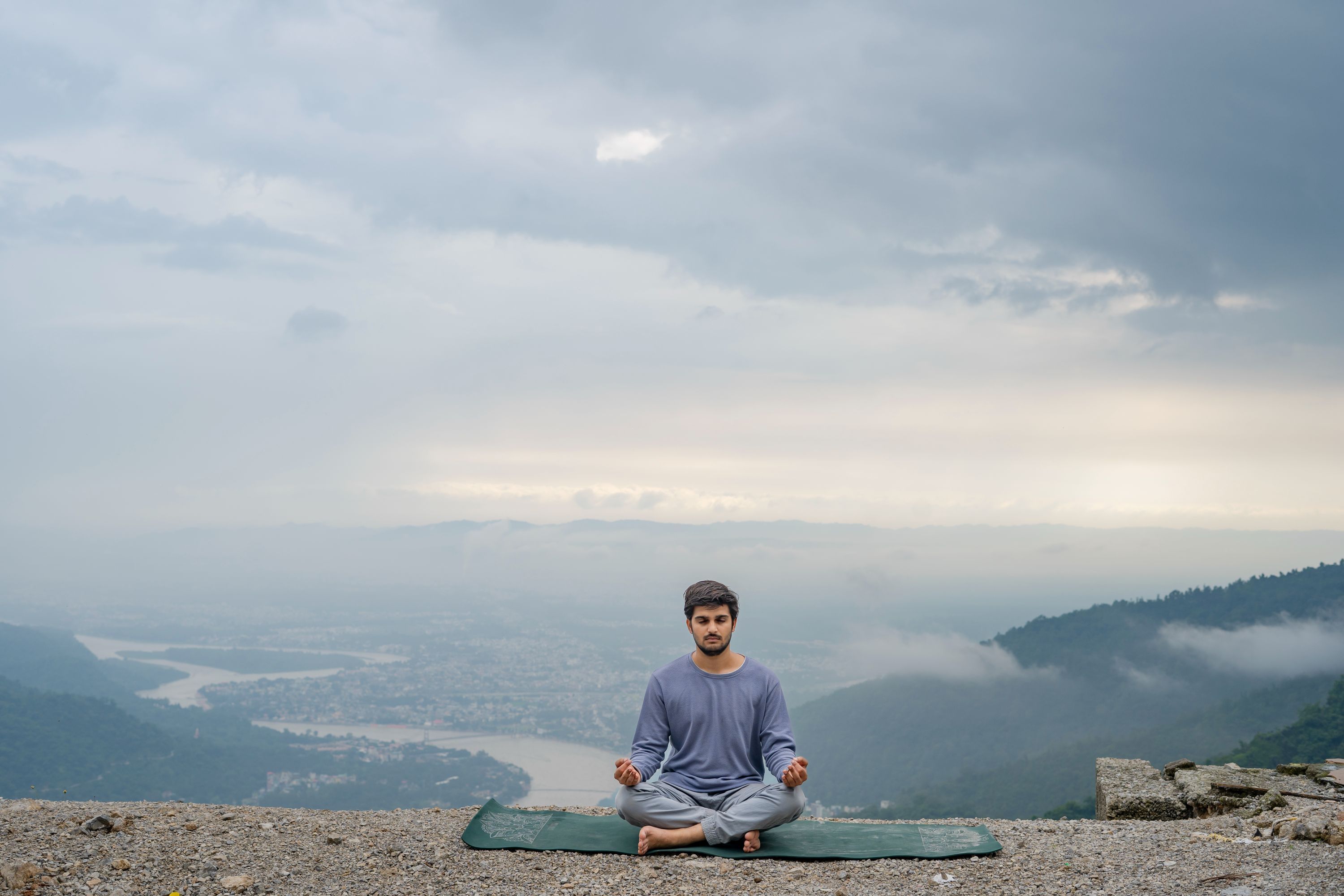
This pose provides a good stretch for the hips, groin, and ankles, all key areas required to do Padmasana comfortably. Practice this pose daily to improve flexibility before starting with Padmasana.
Sit cross-legged with your spine elongated.
Bring each foot under the opposite knee.
Rest your hands on your knees, palms facing up or down as per preference.
Close your eyes and engage your core slightly.
Allow your knees to relax toward the floor. Also relax the shoulders, jaw, and facial muscles, allowing the body to settle into the pose.
Keep breathing deeply, inhaling through the nose and exhaling slowly through the mouth.
2. Baddha Konasana (Butterfly Pose)

This is a great pose to open the hips and stretch the inner thighs, helping you progress towards doing Padmasana comfortably. Regular practice can help you develop mobility, making Lotus Pose easier to hold.
Sit with your legs extended.
Bend your knees and bring the soles of your feet together.
Hold your feet with your hands and press the outer edges firmly into the floor.
Allow your knees to relax downward without force.
Hold for 10-15 breaths.
3. Virasana (Hero Pose)
This pose helps stretch the thighs, knees, and ankles—essential for doing the Lotus Pose easily. With consistency, you can build more flexibility in these areas and do Padmasana comfortably.
Kneel on the floor with your knees together.
Sit between your heels, ensuring your back is straight.
If your hips don’t touch the floor, place a block or cushion under your buttocks for support.
Part 2: Padmasana: Step-By-Step Instructions
Wondering how to sit in Padmasana? Here is a step-by-step guide to help you:
Step 1: Sit on the floor with your legs extended and your spine upright.
Step 2: Bend your right knee and place your right foot on top of your left thigh. The sole should face upward, and the heel should be close to your lower abdomen.
Step 3: Bend your left knee and place your left foot on top of your right thigh, mirroring the position of the first leg. Both soles should be facing upward.
Step 4: Place your hands on your knees with palms facing up and the thumb and index finger touching.
Step 5: Keep your spine elongated from the base of your neck to the crown of your head.
Step 6: Hold the pose, and then switch the position of your legs.
Step 7: Repeat on the other side.
Step 8: Maintain steady breathing throughout. Inhale deeply, and exhale for twice the length of your inhalation.
Part 3: Tips for Proper Alignment & Safety
It’s crucial to be safe while holding the pose. Keep the following in mind:
Duration: Hold the pose for a minute if you’re a beginner. If you’re an advanced practitioner, hold the pose for as long as it feels comfortable.
Protect Your Knees: If your knees feel strained, work on hip flexibility first by practicing the preparatory poses consistently.
Flex Your Ankles: Slightly flexing your feet engages the tibial muscles, reducing strain on the knee and ankle joints, making this pose safe and comfortable for you.
Ensure Proper Foot Placement: The outer edge of your ankle should rest near your lower abdomen. Avoid overstretching and be cautious of discomfort in the ankles.
Listen to Your Body: Distinguish between mild discomfort (stretching) and sharp pain (potential injury). Stop if you feel pain.
Practice Relaxing Poses: After sitting in Padmasana for an extended period, counterposes help release tension and restore circulation. Some relaxing poses include:
Paschimottanasana (Seated Forward Bend Pose)
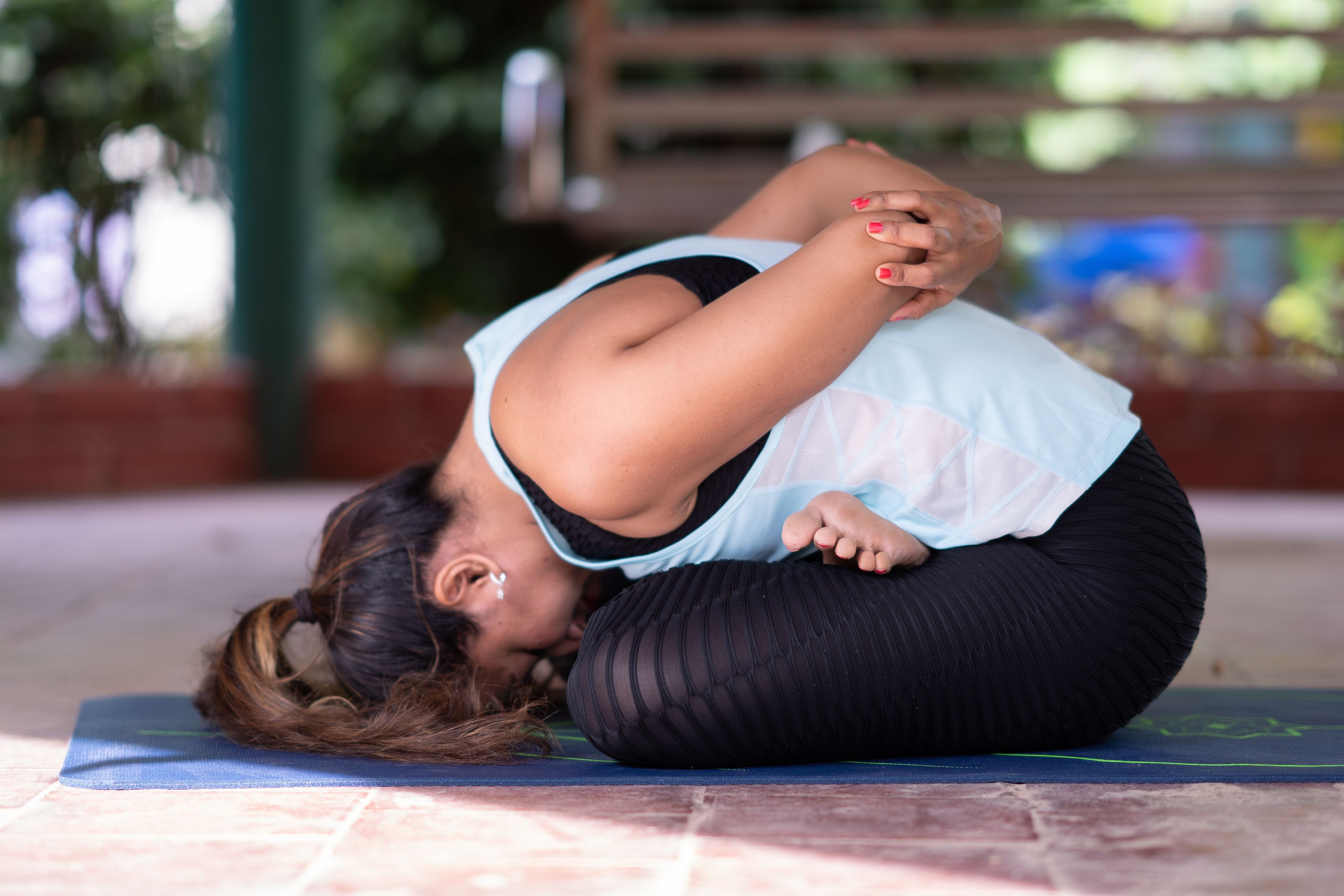
This pose stretches the spine and hamstrings while restoring circulation to the legs.
Extend your legs forward.
Inhale, and lift your arms.
Exhale and fold forward, reaching toward your feet while keeping your spine long.
Hold for a few deep breaths, then slowly release.
Savasana (Corpse Pose)
This is the ultimate relaxation pose that releases tension and restores calm to the body.
Lie down on your back, arms relaxed by your sides.
Focus on deep, mindful breathing.
Stay in the corpse pose for 3-5 minutes, breathing deeply.
Learn Padmasana step-by-step with a coach! Book a free 1-on-1 trial session today.
Types of Padmasana
Whether you’re working on hip mobility or seeking deeper engagement, there are several Padmasana variations you can practice to suit your needs, level of flexibility, and comfort.
1. Ardha Padmasana (Half Lotus Pose): This is a beginner-friendly version of Padmasana that can improve flexibility in the hips and knees, preparing the body for the full Lotus Pose. It involves placing one foot on the opposite thigh while the other remains on the floor.
2. Seated Mountain Pose in Lotus Position: This variation encourages a strong and stable posture, much like Tadasana (Mountain Pose) but in a seated position. The spine remains elongated, and the arms can be extended overhead in prayer formation to deepen the stretch.

3. Lotus Pose Forward Bend: Adding a forward fold to Padmasana enhances spinal flexibility and releases tension in the lower back. This variation provides a deep stretch for the glutes, shoulders, and chest while promoting relaxation.
4. Half Lotus Pose with Side Bend (Hands Behind Head): This pose involves a gentle side bend to stretch the obliques, spine, and shoulders, making it a great warm-up pose. In this variation, one leg is placed in a half-lotus position while the hands are interlocked behind the head.

5. Baddha Padmasana (Bound Lotus Pose): This is an advanced variation, involving crossing the legs in full Padmasana while reaching the arms behind the back to grab the opposite toes. It increases flexibility in the shoulders, chest, and hips.
6. Utpluthi (Lifted Lotus Pose): Another advanced strength-based variation, this pose requires lifting the body off the ground while maintaining Padmasana. It strengthens the core, arms, and shoulders while improving balance and control.
7. Half Lotus Pose with Props: For those with limited flexibility, using yoga props like blocks, cushions, or folded blankets can provide additional support. This variation makes Padmasana easier by reducing strain on the knees and ankles.
8. Lotus Pose in a Chair: An excellent option for seniors or individuals with mobility issues, this variation allows you to practice Padmasana while seated in a chair, ensuring comfort and ease.
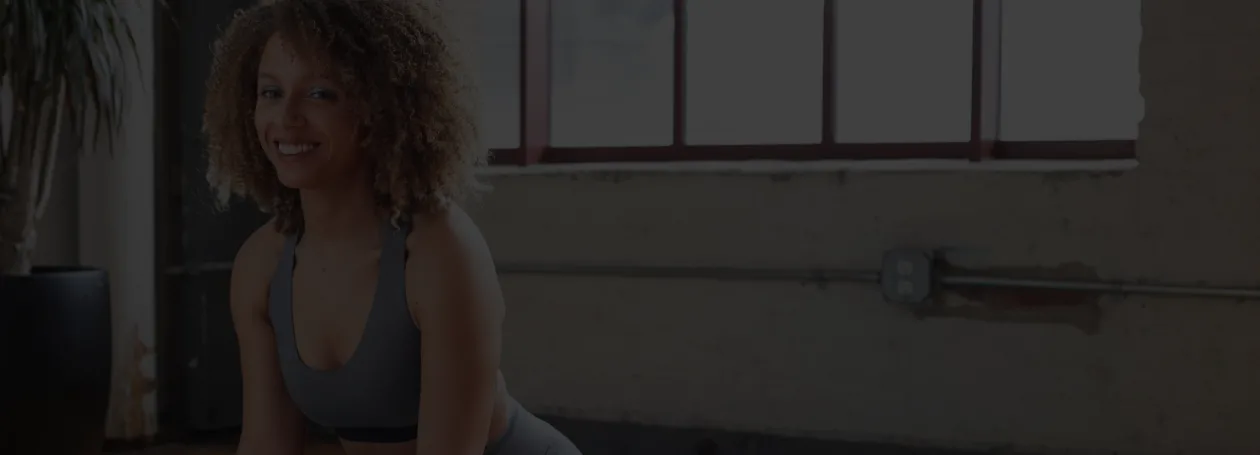
Enjoy a Free 1-on-1 Session with a Coach!
Receive personalized guidance tailored to your unique fitness goals, live with a dedicated coach—no credit card required.
Frequently Asked Questions
It's a seated position with crossed legs and feet on top of the opposing thighs at the hip crease. The word "Padmasana" comes from two Sanskrit words: Padma, which means "Lotus," and Asana, which means "Seat" or "Posture."
Lotus position is classified as intermediate to advanced because it necessitates hip flexibility and openness in order for the feet to be placed on opposing thighs without causing discomfort or knee twisting.
- Sit in a staff position (Dandasana).
- Your right leg should be crossed across your left thigh.
- Place the left foot over your right thigh.
- Bring your hands to your knees on each side.
- Make sure your root and throat locks are activated.
- Continue to take deep breaths while closing your eyes.
It may come as a surprise that being unable to sit cross-legged is a sign of strained muscles. The numerous advantages of sitting cross-legged will astound you.
1. It expands your range of motion.
2. It enhances blood circulation.
3. It's an excellent way to stretch your muscles without having to do anything.
4. It is also beneficial to your joints and knees.
5. It helps you to maintain a better posture.
6. It promotes bowel movement.
7. Finally, when you sit cross-legged, your ankles put additional pressure on your inner thighs' arteries. This pose causes your heart to pump more blood, resulting in better oxygenation of other body areas and improved function.
The major muscles that rotates the femur bone at the hip internally are the tensor fascia lata (TFL) and gluteus medius. When the hip is flexed, the gluteus minimus participates in this motion.
Whenever the internal rotators are tight, the joint's outward rotation is restricted, which is important in postures like Lotus. Thus, the lotus pose improves lumbar spine circulation, nourishes and tones abdominal organs, strengthens ankles and legs, and develops hip flexibility.
Yes, your hips will open when you sit in the lotus position for more extended periods. Particularly if done on a stable surface. Sukhasana (cross-legged) has the same effect on the hips. There are, however, other asanas that can help with flexibility. Also, if the legs feel numb, one should not remain in the lotus for too long.
Lotus Pose is thought to quiet the mind and help the practitioner prepare for profound meditation. It also stretches the ankles, knees, and hips while strengthening the spine and upper back..
The primary variations are the half-lotus, one toe lotus, inverted lotus pose, and psychic union stance. At the same time, the legs are in lotus or half-lotus in advanced variants of various other asanas, including yoga headstand or handstand.



%20(7).jpg)
